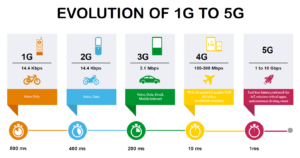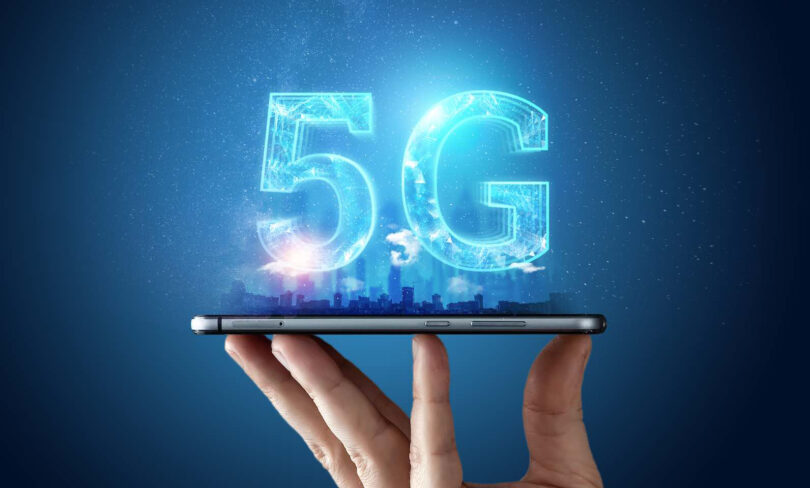Bye, bye 1G, 2G, 3G, and even 4G; there is a new network sheriff on the internet! 5G is a modern wireless standard that was developed not just for people, but for things, machines, objects, and all sorts of possible devices.
This evergreen question has drastically populated various online forums and platforms because of the rising curiosity about 5G among people around the world. It’s all about speed, reliability, and adaptive capability. Notably, we are viewing multiples of gigabits per second about data rates and extremely low latencies for smooth operation. Just try to picture yourself downloading a movie in a few seconds and playing games with no response time. 5G is also known for its large network capacity and this is because even with a large number of active users, the network would not be strained in any way. This means that there are fewer interferences and a smoother flow that is less likely to be associated with frustration for everybody.
So while 5G has been primarily branded as the latest 5g technology that will allow for faster downloads and smooth streaming, it is so much more than just that. They then lay down the foundation for new advancements. As it stands, due to enhanced efficiency in its operation, latest 5g technology has possibilities in various sectors including manufacturing, healthcare, and self-driving cars amongst others.
Inventor of 5G: Who created it?
The discovery of the fifth-generation technology is also not associated with the name of an individual or organization. It has been the resultant effect of synergy!
- Standardization: Hence the official latest 5g technology standard is set by the 3rd Generation Partnership Project (3GPP) an international collaboration of telecommunications standardization organizations; it is made of various industry, educational, and governmental entities. These provide technical standards for latest 5g technology and their implementation to be compatible across networks and countries.
- Innovation: Some of the roles that several players within the mobile ecosystem have had when it comes to building the base technologies for 5G are as follows. Some of the industry-leading manufacturers featured in this list are Qualcomm, Ericsson, Nokia, Samsung, Huawei, and ZTE among others. All these companies have come up with different contributions toward the development of the essential features of 5G such as chipsets of the networks as well as the network architectures.
- Research & Development: The 5G development can be recognized utilizing some activities like International Mobile Telecommunications-2000 (IMT-2000) that was undertaken by the International Telecommunication Union (ITU) in late 1980. This project was aimed at establishing common requirements for 3G networks in the world which have been developed into higher standards including 4G and now 5G networks.
Future of 5G: A glimpse into the future
Top phones with 5G:
-
Sale!

Google Pixel 8
$699.00Original price was: $699.00.$599.99Current price is: $599.99. Buy product -
Sale!

SAMSUNG Galaxy S24
$859.99Original price was: $859.99.$779.99Current price is: $779.99. Buy product -
Sale!

iPhone 15 Pro Max
$1,099.00Original price was: $1,099.00.$999.00Current price is: $999.00. Buy product
What we are discussing is not just a ‘faster internet’; it is a new breed of technology, a social architecture in its own right. As 5G networks mature and expand, here are some exciting trends we can expect to emerge:
- The Rise of the Internet of Things (IoT): Low latency and the ability to connect many devices at a time will be the defining features of a 5G network. From smart home devices and autonomous automobiles to industry 4.0 applications and smart clothes’ interconnected devices, IoT will expand exponentially. Picture factories where machines are constantly monitored and cities where traffic systems are integrated.
- Immersive Experiences Take Center Stage: Visualize yourself sitting in your armchair watching a live performance with astounding light displays and zero latency. High bandwidth enabled by 5G will lead to the development of VR/AR as the new dimension of reality combining the real with the virtual. 5G will drive changes in numerous sectors, including education, telehealth, and even entertainment through VR/AR.
- Cloud Gaming Goes Mainstream: In Gaming, lag is one of the biggest things that can put a damper on the entire experience of the game. Cloud Gaming’s latency will be reduced dramatically through 5G, which will enable users to play high-end games through a remote computer without the need for high-horsepower local equipment. From this idea, one can only imagine the capability of playing graphically intensive games from any location desired at any given moment with low latency. It can also lead to a situation in which cloud gaming will become more tangible to casual gamers as well as hardcore gamers.
- AI Gets a Boost: Some of the key elements that make up AI include the availability of huge datasets and real-time data processing. 5G will also be instrumental in AI since it will enhance data transfer and information processing speed, among other things. This could further help in furthering other sectors such as face recognition, artificial intelligence, and user customization.
- Smart Cities of the Future: Smart cities will rely on 5G networks as a platform base for data collection, analysis, and decision-making. Consider roads with signal lights that alter depending on traffic density, waste management that is done based on flow rates, and even sensors that monitor the ecosystem and adapt as necessary.
Development of 5G: From Seed to Speed

This is not the story of a sudden start to innovation, as many articles prematurely claim, but a story of gradual development over fifty years. Here’s a glimpse into the key milestones that paved the way for this revolutionary technology:
- The Seeds of Change (Late 1980s): Exemplification of 5G begins with initiatives as progressive as the International Mobile Telecommunications-2000 (IMT-2000) by the International Telecommunication Union (ITU). This project centered on deploying global standards for 3G networks and hence served as a precursor to the deployment of 4G and the current 5G.
- Setting the Stage (2015): Now let’s fast forward twenty years to 2015 and the 3GPP, an organization of industry leaders that initiated the process of designing the 5G standard. This group is involved in setting up the technical solutions that help support tighter compatibility between various 5G networks across the world.
- The Race for Innovation (2016-2018): This phase was filled with various communications company activities involving Qualcomm, Ericsson, Nokia, Samsung, Huawei & ZTE. Both players used significant amounts of capital towards research and development that led to constructing the foundation of 5G. This involved techniques related to chipsets as well as the networks needed for the support of 5G in addition to software that is suited for 5G necessities.
- The First Steps (2018-2019): In the case of cumulative effects on health knowledge and different risk factors, the years 2018 and 2019 constituted the deployment phase. It is also important to note that early rollouts were limited in scope but still provided important measures for testing the technology. Inexpensive test areas were organized in countries that began early 5G networks, including the US, South Korea, and China, providing working situations for enhancement.
- Standardization and Expansion (2020-Present): Even now in 2024, 5G standardization is still active and the specifications set are continually developed with new features and functionalities added. But today, it is being implemented commercially in different regions of the world. Market players are actively seeking to boost the number of connected sites, to make 5G networks as widely available as possible.
- The Future Unfolds: The development of 5G is an incomplete process that is still going on. In the coming years, more enhancements could be seen in existing about several aspects such as network bandwidth, latencies, and overall network capacity. Also, ongoing research focuses on the utilization of 5g in different applications for future developments in different fields on the horizon.







